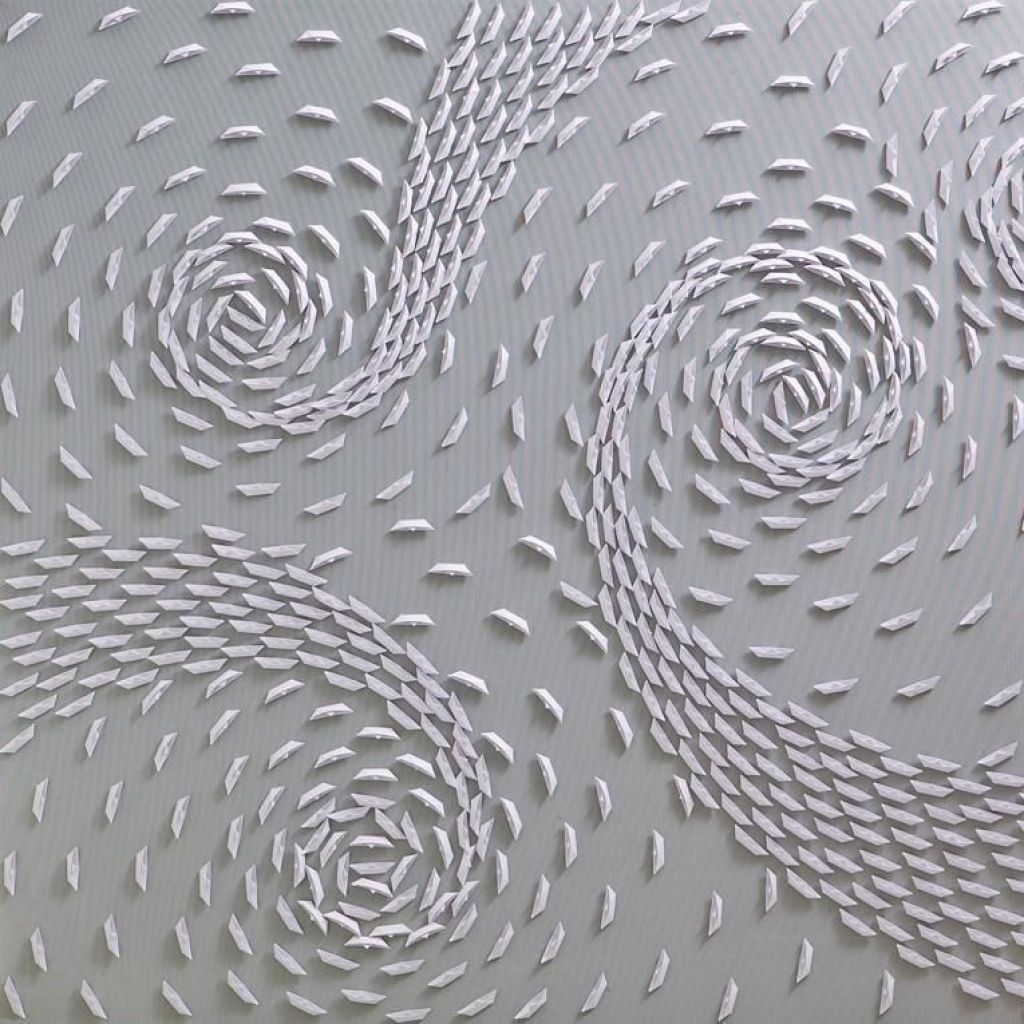
Riccardo Gusmaroli
(Verona, 1963)
Gusmaroli’s conceptual research is focused on the impulse that man has towards the exploration of new territories, ideally represented as an elliptical and spiral wandering in the meanders of imagination and psyche, through the paper boats that, in addition to being the constituent elements, become the metaphors, multiplied to infinity, the yearning to go beyond the two-dimensionality of the canvas, in a new energetic, vibrant, plastic and multifaceted dimension.
In the early ‘90s he exhibited at the Castello di Volpaia, in Raddam Chianti (1991), at the New York gallery of Sperone (1993) and at Studio Raffaelli in Trento (1994), as well as later, at the Civic Museum of Lodi, at the Castle of Corneliano Bertario (Mi) and at the Viafarini Gallery in Milan, next to Carla Accardi and De Maria, in 1996, and, in 1999, in Brussels and Barcelona. His artistic path is influenced by the experience as still-life photographer at Studio Azzurro, which leads him to found Studio Acqua in 1984.
In 2009 he held the collective exhibition Mappe at the Galerie di Méo in Paris, where he exhibited alongside Boetti, Fabro, Pizzi Cannella and Salvo. In 2010 the Colossi Arte Contemporanea gallery dedicated to him the solo exhibition 3 oceani, 7 mari, 149mila km² di terra. His work is a visual poetry that consists of delicate oriental origami, arranged in swirls, as an allegory of ocean currents, around the indefinite outlines of geographical boundaries in gold leaf, a material which has been historically used in art to define the cancellation of the space-time dimension, generating in the viewer a sort of détournement, visual estrangement; an aspect that led him to work with the group of Portofranco, founded by Franco Toselli, along with Paola Pezzi, Iacopino and Kazumasa. The artist’s desire to overturn the objective parameters of measurement of space, to immerse the viewer in a perceptive dimension free from cultural conditioning has allowed him to reactivate the space of representation from an aesthetic point of view, thanks to the repetition of formal modules generated by a simple gesture such as folding, but able to create visual situations of extreme formal delicacy reminiscent of oriental arabesques. In 2016 he exhibited at the UNX Gallery and at the Italian Cultural Institute in New York, alongside Bonalumi, Simeti, Dadamiano and Pinelli.
Works
-
 Ecovortice
EcovorticePAPER BOATS ON CANVAS
-
 Vortice Rosso
Vortice RossoPAPER BOATS ON CANVAS
-
 Mondo oro
Mondo oroPAPER BOATS AND GOLD LEAF ON CANVAS
-
